Over the years, electrical projects were added to the TJ….one here, one there, one under the hood, one in the back….you get the idea. Slowly but surely, I ended up with electrical switches stuck in various places with power relays tucked away here and there. When I pulled the center console, during my AW4 tranny swap, I had to deal with some electrical wiring that had been installed in the console. It was a hassle and I finally ended up cutting the wiring and promised myself I would deal with it later. It was then I decided to clean things up and do something with the myriad of power relays and switches. Both were added to my to-do list.
The first item to be scratched off of the list was the switches. I installed a group of small rocker switches in the center console. Putting the switches on the console made them easy to access and helped to localize the wiring at the same time. My tranny temp gauge had been installed in the center console when the AW4 was put in the TJ. Together, they made for well over a dozen electrical connections. Installing multi-pin electrical Molex connectors on the console would be needed given the large number of wires I was dealing with.
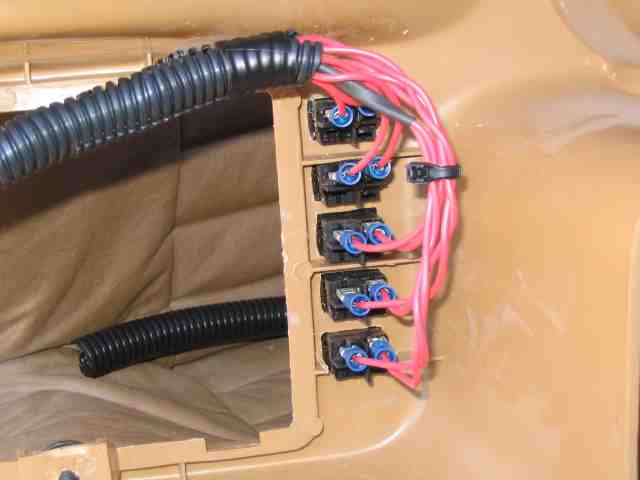
I started with the recently installed rockers switches. With some wire loom and zip ties, I bundled the wires together and routed them along the side of the console, out of harms way from the tranny and transfer case shifters.
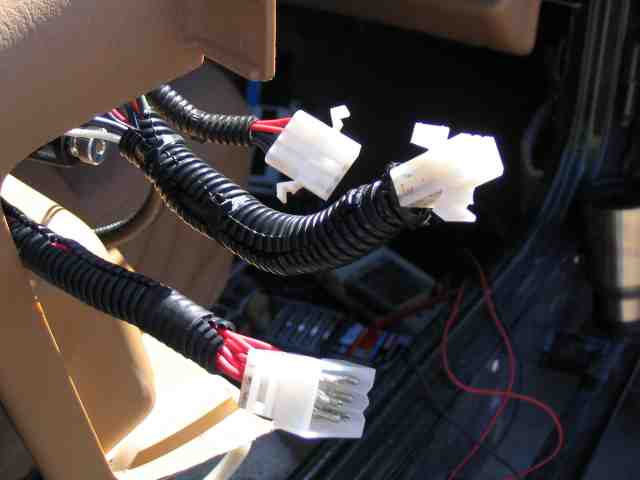
The end result on the console was three different Molex connectors with a bundle of wires going to each one. I used a 12 pin connector for the 10 wires coming from the five switches. A 6 pin connector was used for the tranny temp gauge circuitry, and a 4 pin connector was used for the TWC switch. I also wired the dimmer controlled console light circuit for the auto tranny shifter (another one of those things that were on my to-do list).
As I hooked the various wires to the Molex connector pins, I made note of what switches or gauge wires were attached to each one. I still had to wire the vehicle half of the connector and without proper notes, there was no way I could remember what wire went to which connector pin.
I needed some method by which to mount a bunch of relays. In the past, I would wire the relay and then use a zip tie or two to strap it in place, usually onto another wire bundle on the fire wall.

I had some 3/4″ wide 6061 aluminum alloy flat stock sitting next to the work bench and decided it should work well for a mounting bar. I stopped by the local ACE hardware store and got some #10 screws in various lengths and nyloc nuts to keep it all together. I also picked up some 1/2″ thick nylon spacers that were made with a #10 hole in it. I drilled a pair of mounting holes for the #10 hardware and also made 6 holes to mount the relays.
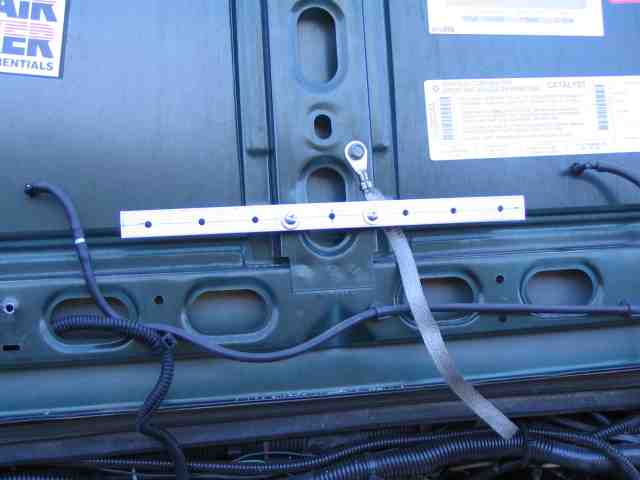
Using the nylon spacers, I located the mounting bar on the underside of the hood. The spacers offset the mounting bar away from the hood and provide some clearance for getting to the mounting hardware used on the relays.
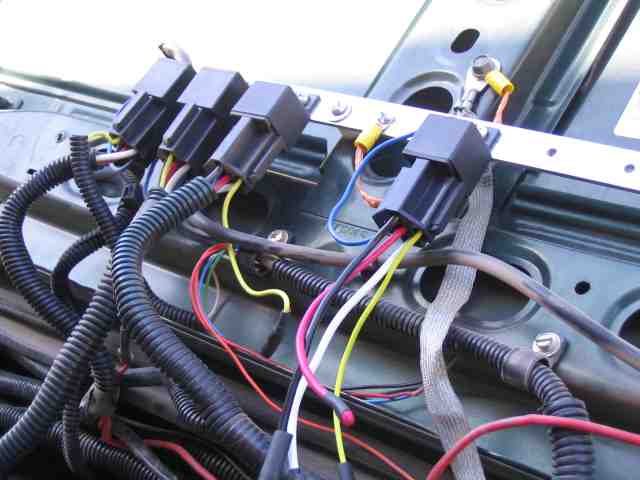
A photo of the work in progress as the “gaggle” of relays are mounted on the strip. I use relay sockets that I get from an on-line vendor. They are $3 each and after having tried crimp on connectors attached to the relay terminals, I’ll spend the extra coin and use the relay socket.
More Switches and Relays
As my back grew tired from leaning over the fender well to work on the relays, I decided it was time to go back into the cab and do some more work on the console wiring harness. I still had to put some of the vehicle side wiring together to mate up with the console connectors.
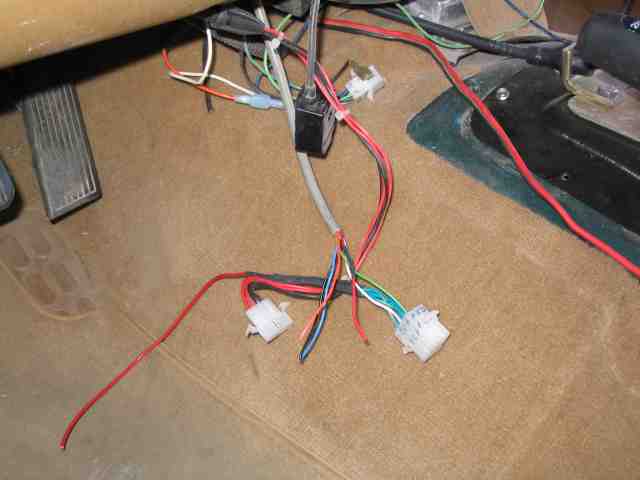
This some some of the “before” wiring that had slowly accumulated under the dash and with it is some of the new relay rack control wiring. What a mess!
I went through my “wire junk box” where I keep my odds and ends of electrical wire, connectors, switches, fuse holders, etc. to see if I had something suitable for the relay control wires. I found a multi-conductor cable comprised of six 18 gauge insulated wires. Since I had room for six relays on the mounting bar, I decided to route this cable through the firewall and hook it up to a 12 pin Molex connector. This would match up with the group of switches that were mounted on the center console.
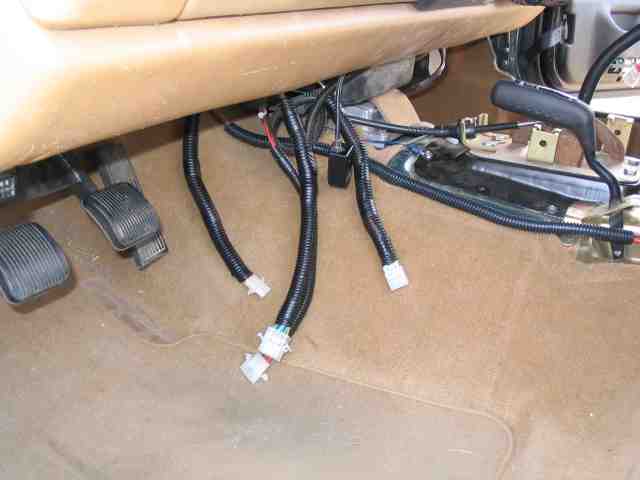
I soldered the pins onto the end of the relay control wires and inserted them into the 12 pin Molex connector. On another six pins, I attached +12V switched ignition power. So each pair of contacts would then be attached to a pair of switch contacts. When the switch was closed, it would apply +12V to the corresponding relay coil and energize it. Things cleaned up nicely with some wire loom and a few more zip ties. I was down to putting the console back into the TJ.
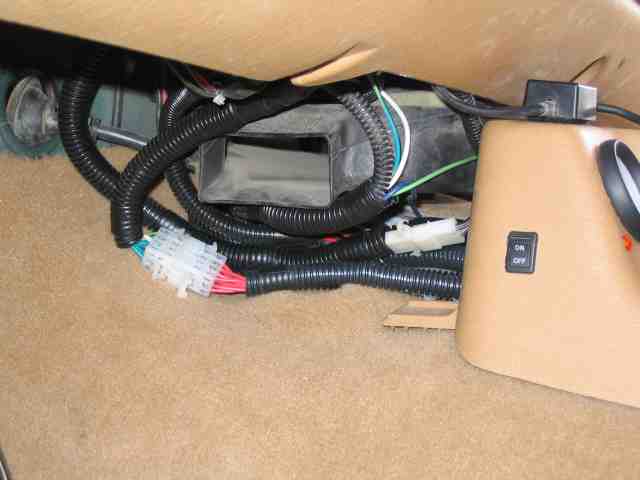
The Molex connectors were plugged in and the console was wired and ready. I ‘ll get under the dash one more time and tidy up the cables a bit more when I get some time. It was nice to install the dash and just plug the connector together.
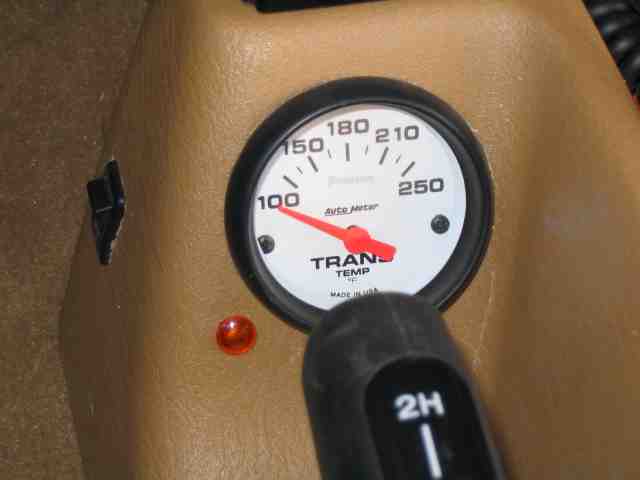
Another addition to the center console was an orange LED indicator. I mounted it adjacent to the tranny temp gauge. When illuminated, it lets me know that there is power to the 12V fan on my tranny cooler. I can usually hear the fan (out on the trail) but if I don’t hear it, and the light is on, I probably have something wrong with the fan and I’m not getting the cooling I would be expecting.

Still not done with the last of the relays, but it is getting closer. Once I am finished mounting them, I’ll zip tie the wiring back and straighten it up a bit. To cut down on the amount of wiring required, I connected one end of each relay’s coil (the blue wire for these relay sockets) to ground. I crimped a ring terminal onto the wire and put it under the #10 screw that holds the relay in place.
That about does it. This is one way to install a bank of relays and the necessary switches for your electrical projects. It will hopefully give you some place to start and provide you with an idea or two on how you may want to do yours. Remember to always fuse your circuits. It is the best way to prevent electrical fires.
Enjoy your Jeep and remember to TREADLightly!
